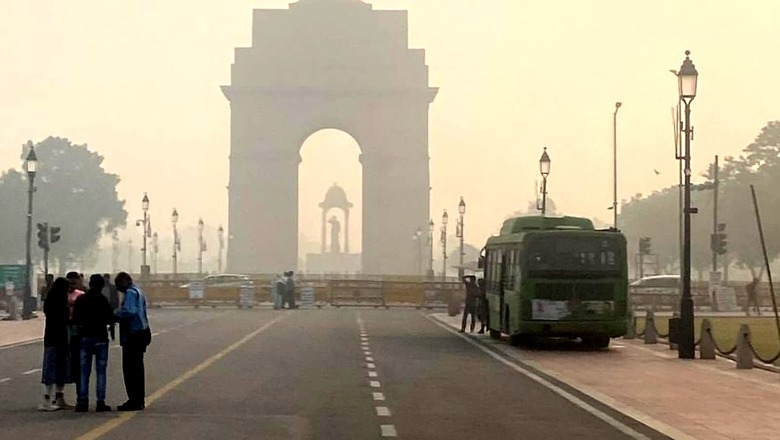
views
Delhi environment minister Gopal Rai on Wednesday urged the national capital residents to report instances of construction work, use car and bike pools, opt for work from home, stop use of coal and wood and provide electric heaters to security guards. His appeal comes as Delhi air quality continues to be ‘severe’.
“I request the UP and Haryana governments to form regional special task force to reduce air pollution in areas adjoining Delhi like Gurugram, Faridabad, Ghaziabad and Noida. The pollution problem is not the state’s problem. It happens due to the air system that develops,” Rai said at a press conference.
The layer of acrid smog persisting over Delhi thickened on Tuesday amid calmer winds and raging farm fires in Punjab, with the city recording a 24-hour average air quality index (AQI) of 424, the worst this year.
NASA’s satellite images showed a dense cluster of red dots denoting farm fires in Punjab and parts of Haryana, and a layer of smoke blanketing huge swathes of the Indo-Gangetic plains — from east Pakistan to east Uttar Pradesh.
Delhi’s 24-hour air quality index (AQI) stood at 424 at 4 pm on Tuesday, the worst after December 26 last year when it was 459.
This is the second ‘severe’ air quality day in Delhi this year after January 2 (AQI 404), according to the Central Pollution Control Board (CPCB) data.
An AQI above 400 is considered “severe” and can affect healthy people and seriously impact those with existing illnesses.
According to the Energy Policy Institute at the University of Chicago (EPIC)’s Air Quality Life Index (AQLI) released in June, residents of Delhi stand to lose 10 years of life expectancy due to poor air quality.
With pollution levels worsening, the Centre’s air quality panel had on Saturday directed authorities to impose a ban on construction and demolition activities in Delhi-NCR, except in essential projects, and other curbs under stage three of the Graded Response Action plan (GRAP).
GRAP, first implemented in 2017, is set of anti-air pollution measures followed in the capital and its vicinity according to the severity of the situation.
It classifies the air quality in the Delhi-NCR under four different stages: Stage I – ‘Poor’ (AQI 201-300); Stage II – ‘Very Poor’ (AQI 301-400); Stage III – ‘Severe’ (AQI 401-450); and Stage IV – ‘Severe Plus’ (AQI >450).
This year, curbs on polluting activities are being imposed up to three days in advance based on forecasts. Earlier, the authorities would implement the measures only after the PM2.5 and PM10 concentration touched a particular threshold.
The next stage in the “Severe Plus” category or Stage IV can include steps like a ban on entry of trucks into Delhi, allowing 50 per cent of staff to work from home in public, municipal and private offices, closure of educational institutions and the plying of vehicles on an odd-even basis, etc.
Read all the Latest India News here




















Comments
0 comment